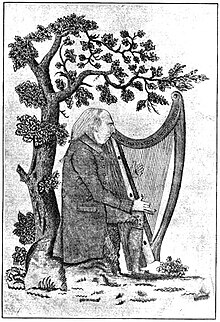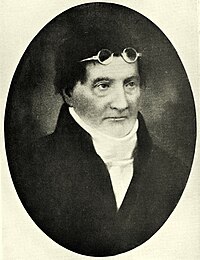
The Gaelic revival was the late-nineteenth-century national revival of interest in the Irish language and Irish Gaelic culture. Irish had diminished as a spoken tongue, remaining the main daily language only in isolated rural areas, with English having become the dominant language in the majority of Ireland.

George Augustus Chichester, 2nd Marquess of Donegall KP, PC (Ire), styled Viscount Chichester until 1791 and Earl of Belfast from 1791 to 1799, was an Anglo-Irish nobleman and politician.

Henry Joy McCracken was an Irish republican executed in Belfast for his part in leading United Irishmen in the Rebellion of 1798. Convinced that the cause of representative government in Ireland could not be advanced under the British Crown, McCracken had sought to forge a revolutionary union between his fellow Presbyterians in Ulster and the country's largely dispossessed Catholic majority. In June 1798, following reports of risings in Leinster, he seized the initiative from a leadership that hesitated to act without French assistance and led a rebel force against a British garrison in Antrim Town. Defeated, he was returned to Belfast where he was court-martialed and hanged.

William Drennan was an Irish physician and writer who moved the formation in Belfast and Dublin of the Society of United Irishmen. He was the author of the Society's original "test" which, in the cause of representative government, committed "Irishmen of every religious persuasion" to a "brotherhood of affection". Drennan had been active in the Irish Volunteer movement and achieved renown with addresses to the public as his "fellow slaves" and to the British Viceroy urging "full and final" Catholic emancipation. After the suppression of the 1798 Rebellion, he sought to advance democratic reform through his continued journalism and through education. With other United Irish veterans, Drennan founded the Belfast [later the Royal Belfast] Academical Institution. As a poet, he is remembered for his eve-of-rebellion When Erin First Rose (1795) with its reference to Ireland as the "Emerald Isle".
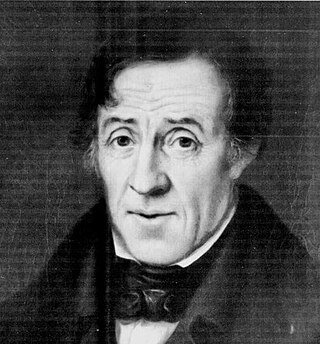
James "Jemmy" Hope was a radical democrat in Ireland who organised among tenant farmers, tradesmen and labourers for the Society of the United Irishmen. In the Rebellion of 1798 he fought alongside Henry Joy McCracken at the Battle of Antrim. In 1803 he attempted to renew the insurrection against the British Crown in an uprising coordinated by Robert Emmett and the new republican directorate in Dublin. Among United Irishmen, Hope was distinguished by his conviction that "the fundamental question at issue between the rulers and the people" was "the condition of the labouring class".
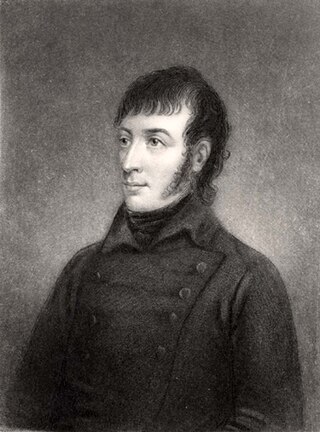
Thomas Paliser Russell was a founding member, and leading organiser, of the United Irishmen marked by his radical-democratic and millenarian convictions. A member of the movement's northern executive in Belfast, and a key figure in promoting a republican alliance with the agrarian Catholic Defenders, he was arrested in advance of the risings of 1798 and held until 1802. He was executed in 1803, following Robert Emmet's aborted rising in Dublin for which he had tried, but failed, to raise support among United and Defender veterans in the north.
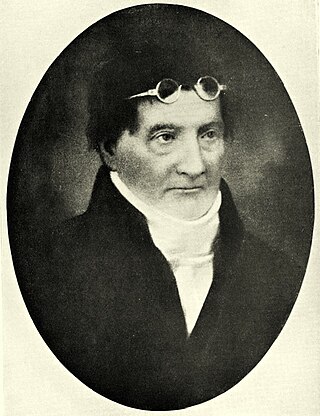
Edward Bunting was an Irish musician and folk music collector active in Belfast.

The Belfast Harp Festival, called by contemporary writers The Belfast Harpers Assembly, 11–14 July 1792, was a three-day musical and patriotic event organised in Belfast, Ireland, by leading members of the local Society for Promoting Knowledge : Dr. James MacDonnell, Robert Bradshaw, Henry Joy, and Robert Simms. Edward Bunting, a young classically trained organist, was commissioned to notate the forty tunes performed by ten harpists attending, work that was to form the major part of his General Collection of the Ancient Irish Music (1796). The venue of the contest was in The Assembly Room on Waring Street in Belfast which was opened as a market house in 1769.
Events from the year 1792 in Ireland.

Mary Ann McCracken was a social activist and campaigner in Belfast, Ireland, whose extensive correspondence is cited as an important chronicle of her times. Born to a prominent liberal Presbyterian family, she combined entrepreneurship in Belfast's growing textile industry with support for the democratic programme of the United Irishmen; advocacy for women; the organising of relief and education for the poor; and, in a town that was heavily engaged in trans-Atlantic trade, a lifelong commitment to the abolition of slavery. On International Women's Day 2024, a statue of Mary Ann McCracken was unveiled in the grounds of Belfast City Hall.
Dominic Ó Mongáin, or Dominic Mungan, was an Irish harper and poet, born around 1715 in County Tyrone. The poem and air An raibh tú ag an gCarraig?, translated by Walsh as Have you been at Carrick?, has been attributed to him.

The Belfast Charitable Society, founded in 1752, is Belfast's oldest charitable organisation. It continues its philanthropic work from Clifton House which the society opened, originally as the town's poor house and infirmary, in 1774.
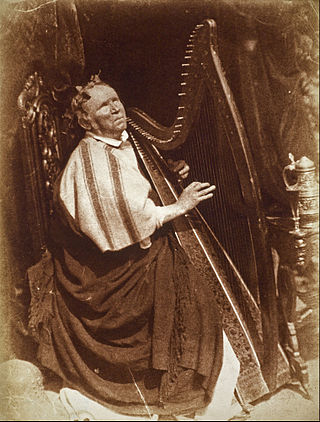
Patrick Byrne or Pádraig Dall Ó Beirn was the last noted exponent in Ireland of the historical Gaelic harp and the first Irish traditional musician to be photographed.
Ruairí Dall Ó Catháin may have been an Irish harper and composer. Recent research, however, raises the question whether he ever really existed. He is said to have been born circa 1580 in County Antrim and to have died circa 1653 at Eglinton Castle.
Arthur O'Neill was an Irish harper, a virtuoso player of the Irish harp or cláirseach: he was active during the final decades of its unbroken instrumental tradition in the later 18th and very early 19th century. He was closely associated with Edward Bunting, and the Belfast Harp Society's ultimately unsuccessful attempt to preserve the instrument, attending the Belfast Harper's Assembly and serving as the Society's harp tutor until 1813. He is best known for his lively and humorous memoir, collected by Bunting, which contained many reminiscences of famous harpers and of the environment in which they played.
William Tennant (1759–1832), often spelt William Tennent, was an Ulster Presbyterian banker and a leading member in Belfast of the Society of the United Irishmen who, in 1798, sought by insurrection to secure a representative and independent government for Ireland. After a period of imprisonment, he returned to the commercial and civic of Belfast, in 1810 helping to found what is today the Royal Belfast Academical Institution.
Robert James Tennent was an Irish Whig politician.

James MacDonnell was an Irish physician and polymath who was an active and liberal figure in the civic and political life of Belfast. He was a founding patron of institutions that have since developed as the Royal Victoria Hospital, the Royal Belfast Academical Institution and the Linen Hall Library and, beginning with the organisation of the Belfast Harpers Assembly in 1792, was a promoter of efforts to preserve and revive Irish music and the Irish language. Among some of his contemporaries his reputation suffered in 1803 as a result of his making a subscription for the arrest of his friend, the outlawed United Irishman Thomas Russell.
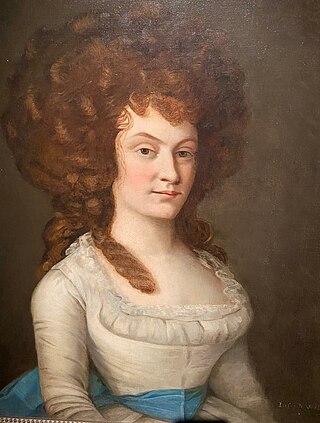
Cherry Crawford Hyndman (1768-1845) was the mistress of a liberal political household in Belfast, Ireland, and reputedly in the 1790s an active member of the republican Society of United Irishmen.

Robert Tennent (1765–1837) was an Irish physician, merchant and philanthropist in Belfast. Representative of a politically radical Presbyterian current in Ireland, in the years following the Acts of Union he was renowned for his confrontations with the local Tory establishment. Among the numerous civic initiatives with which he was associated, the most lasting proved to be Royal Belfast Academical Institution and what is today the Royal Victoria Hospital, Belfast.
